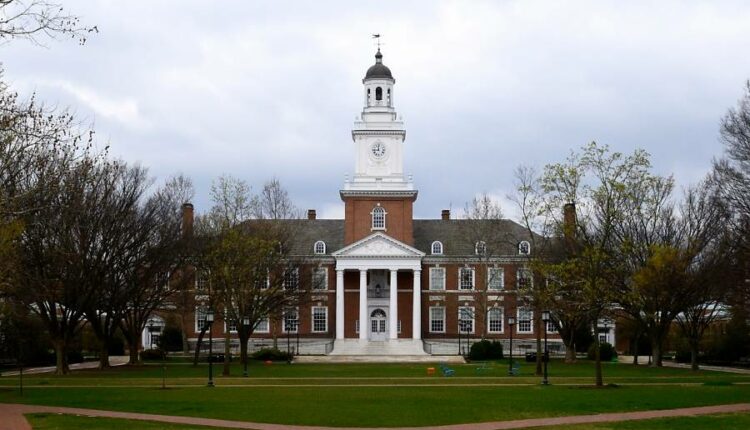Johns Hopkins University: Johns Hopkins Patient Breathes Easier After Nearly Yearlong Battle Following COVID-19
Getting COVID-19 in March 2020 was challenging enough for then 55-year-old Mt. Airy resident Tricia Gibbons. However, what she didn’t realize was that her ordeal would end up lasting nearly a year after her initial diagnosis.
As much of the U.S. was going on lockdown, Tricia developed a fever and achiness. A week later, she tested positive for COVID-19. “I thought I could easily kick this because I don’t usually get sick,” Gibbons says. However, over the next few days, her condition worsened: Her fever stayed continuously at 104 degrees, she could hardly move, and all she could do was sleep.
She was admitted to the intensive care unit at a nearby hospital on April 5. Her condition continued to deteriorate to the point that Tricia was placed on a ventilator, where she remained for 12 days. She was soon discharged to a rehabilitation facility for physical therapy to learn to walk and stand again. Though therapy helped her relearn those activities, she could barely talk and breathing remained difficult.
During an appointment with an otolaryngologist, she was directed to go immediately to the emergency room at Johns Hopkins Bayview Medical Center, where she met Simon Best, M.D., associate professor of otolaryngology–head and neck surgery at the Johns Hopkins University School of Medicine. She was diagnosed with severe tracheal stenosis, a narrowing of her trachea or windpipe, and underwent an emergency procedure to place a tracheotomy to open her airway through her neck.
“Mrs. Gibbons was in airway distress,” Best says. “After some patients are intubated for prolonged periods, scar tissue forms and the airway gets narrower and narrower. She was breathing through an airway that was the size of a straw.”
When a patient is placed on a ventilator, a breathing tube is inserted through the vocal cords into the trachea, or airway. The longer that breathing tube is in place, the higher the risk of injury to a patient’s vocal cords and trachea, including scarring and narrowing. For many patients with COVID-19 pneumonia, ventilator support is needed for days or even weeks. Best alone has seen more than 20 patients diagnosed with COVID-19 with a similar type of vocal cord injury as Tricia, and data from The Johns Hopkins Hospital indicates that these issues may affect up to 20% of patients with long-term intubation from COVID-19.
After three different endoscopic procedures in an attempt to widen Tricia’s airway weren’t successful, Best decided that a tracheal resection was needed, a more complicated surgery to remove damaged and diseased sections of Tricia’s windpipe. Tricia calls it a Hail Mary shot to give her a chance to breathe without the tracheotomy.
For the procedure, Best teamed up with Richard Battafarano, M.D., Ph.D., director of the Division of General Thoracic Surgery at Johns Hopkins Medicine.
The surgery took place in December 2020 at The Johns Hopkins Hospital. During the seven-hour-long procedure, the team removed about 4 centimeters of Tricia’s trachea, more than usual for a woman undergoing the procedure, all due to the severity of the damage from her long-term intubation. The surgery was a success, and one month after surgery, Tricia’s tracheotomy was removed.
“I couldn’t smell. I couldn’t breathe through my mouth and nose. I couldn’t speak at all except for holding the trach,” Tricia says. Now that the tracheotomy tube is removed, she can breathe normally. In addition, even though Tricia still has some raspiness, she now has a voice.
Tricia calculated that she has spent a total of 65 days in the hospital over the past year, and she estimates more than 125 medical professionals have cared for her during that same timeframe.
“It really took a village,” she says. “I am so grateful to be where I am and to have my life back. I feel like a cat with nine lives.”
Tricia and otolaryngologist Simon Best are available for media interviews to discuss Tricia’s experience as well as vocal cord and airway injuries following ventilator support due to COVID-19.

